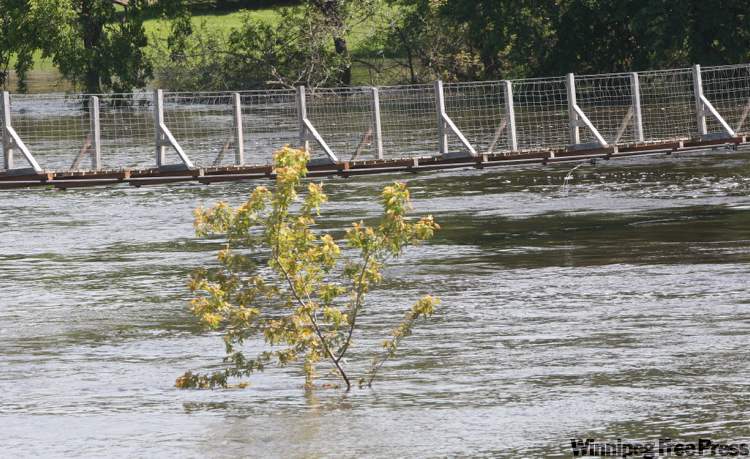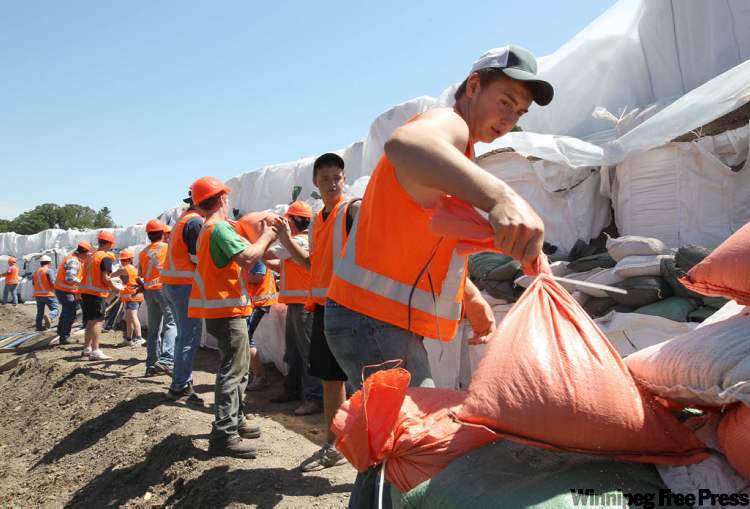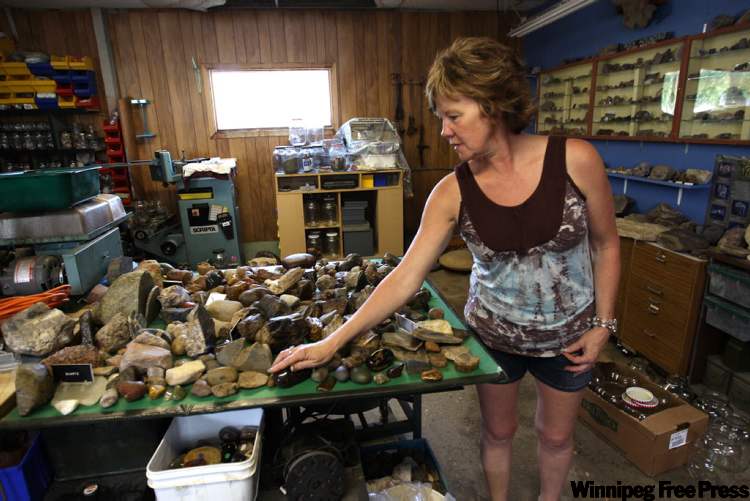Fun, profits washed away
Rural tourism season a casualty of high water
Advertisement
Read this article for free:
or
Already have an account? Log in here »
To continue reading, please subscribe:
Monthly Digital Subscription
$1 per week for 24 weeks*
- Enjoy unlimited reading on winnipegfreepress.com
- Read the E-Edition, our digital replica newspaper
- Access News Break, our award-winning app
- Play interactive puzzles
*Billed as $4.00 plus GST every four weeks. After 24 weeks, price increases to the regular rate of $19.00 plus GST every four weeks. Offer available to new and qualified returning subscribers only. Cancel any time.
Monthly Digital Subscription
$4.75/week*
- Enjoy unlimited reading on winnipegfreepress.com
- Read the E-Edition, our digital replica newspaper
- Access News Break, our award-winning app
- Play interactive puzzles
*Billed as $19 plus GST every four weeks. Cancel any time.
To continue reading, please subscribe:
Add Winnipeg Free Press access to your Brandon Sun subscription for only
$1 for the first 4 weeks*
*$1 will be added to your next bill. After your 4 weeks access is complete your rate will increase by $0.00 a X percent off the regular rate.
Read unlimited articles for free today:
or
Already have an account? Log in here »
Hey there, time traveller!
This article was published 02/07/2011 (5209 days ago), so information in it may no longer be current.
SOURIS — This town bore its pride on a postage stamp.
The Souris Swinging Bridge is the longest historic suspension bridge in Canada, a fact that put its picture on postcards and road signs and that special 2005 stamp. That picture is pretty, showing the bridge’s wooden slats snaking high above a Souris River that is little more than a lazy country stream, before disappearing into the tree-laden banks on the other side.

But now, as 30,000 cubic feet per second surge through the Souris River’s channel, the bridge almost skims the top of angry waves. When the river rises again next week, the structure, which has been there in one form or another for 107 years, will surely be engulfed.
For the 1,500 residents of the picture-perfect town, about 30 minutes southwest of Brandon, it’s a tough blow. “The bridge is fully open and accessible to the public 24/7, 365 days a year,” Souris’s website proclaims: But in 2011, the bridge has been closed since April 12.
No word yet on when it might open: Its supports have been bashed by debris floating in a river that was never imagined to rise this far. Will the swinging bridge survive? Stay tuned. “The water’s so high we can’t get in there to investigate,” Mayor Darryl Jackson said, elbows propped on the picnic table outside the town’s bustling emergency centre.
Losing the bridge — even temporarily — hurts. Some of the town’s residents take the bridge to get to work on the river’s west side, or the hospital and the seniors residences on the east side of the river; but of the possibly 20,000 people who cross the bridge every year, most are visitors from around the province, the country, the world.
Visitors, in other words, who come to spend money in Souris. “Tourism is big to us,” Jackson said, estimating it accounts for perhaps 10 per cent of the town’s revenues. “As far as tourism season for us, well, we’ll have to wait until the ice goes back in the arena, and hockey starts up.”
Because as beautiful as Souris still is — just ignore the leering dikes — all of its other charms are closed: The bird sanctuary near the bridge is deep under water. Its worried peacocks fled out into the town. The 120-site campground — which is so popular it was slated to be expanded this year — is also closed. So is the smash-hit family fun pool the town fundraised to build and opened just last year. And the golf course. And… and…
And it’s all too wet, too flooded, or — in the case of the campground — too torn up by the tracks of trucks hauling dike dirt and sandbags. Restoring the campground, cleaning out the silt from flooding and fixing the damage to buildings and the bandstand and other infrastructure will cost a bundle.
And the bundle is shrunken: The park’s closure alone will cost the Town of Souris $200,000 in revenue this year.
They did build a super-sandbag dike around the beloved pool, though. Some things you’ve got to save.
Even if the June 30 fireworks had to be cancelled.
——
Up to 85 per cent of “tourists” in Manitoba, and well over half the province’s $1.2-billion tourism industry, are homegrown. When the snow melts and the weather warms, ‘Peggers pack up the kids and head to campgrounds, to beaches, to quirky rural attractions and colourful country fairs.
Or they go fishing. Or birdwatching. Maybe they tour the countryside’s historic sites. Or maybe, en route from one place to another, they just stop at a lovingly tended rural museum to marvel at the curious collections and pick out a handmade gift for mom.
The net effect of all this local travel: If agriculture is the heartbeat of southern Manitoba, then tourism is its breath. Communities can hold theirs for awhile — but sooner or later, they must get visitors back to what is now the flood lands.
After all, it’s not like flooded-out farmers have much money to spend. Double whammy.

“When you have visitors coming in, it spills down to everything,” said Gail McDonald, who manages the Interlake Tourism Association. “It’s not the fact that a provincial park is closed alone, but (visitors to those parks) aren’t going golfing. They’re not buying groceries. They’re not taking part in any of the activities.”
Tourism is huge in the Interlake, blessed as it is with two lakes full of fish and beaches and loads of history. But this year, roads are flooded, beaches have disappeared under waves and historic churches are under water — or close to it. Volunteers are trying to juggle the organizing of fairs and festivals while they fight to save their own homes from Lake Manitoba’s spread. One art gallery isn’t opening this year.
“This will not just be 2011,” McDonald said. “If the water went down tomorrow, absolutely back down five feet to where it was last year, it would still take a year to two years (for tourism) to recover. It’s frightening for families that have their whole livelihood in this. Are the hunters going to come next year or even this fall?”
——
One upside of the flood: For those who are making the trip, the fishing has been great.
“If you can’t catch a master walleye here right now, you’re not going to catch one anywhere,” chuckled Lee Poworoznik, one of the managers at the Narrows West Lodge.
That’s the upside. Poworoznik can’t explain it, but somehow the Lake Manitoba flooding that has swallowed the outdoorsy family resort’s permanent marina has brought 30-inch whoppers flocking to chomp on lures.
The downside is that the flooding, or reports of flooding, mean not enough fishers are getting to haul one up. Normally, the resort’s chalets are booked every day from June through September, but the rising waves have forced the resort to close them down. Poworoznik estimates visitors are down nearly 40 per cent from a normal year.
But the Narrows West campground is high and dry, and the lodge is still open for business — even if it is a little scarred by the massive dike that has been raised up in the last few weeks. Workers have eked out a temporary launch spot for daytrippers to take boats out on the water.
If anything, Poworoznik seems to take it as a motivating challenge. There’s still lots to do at Narrows West, he said — even if the lake is now more foe than friend. To make up for the loss in lake tourism, the lodge is fixing to hold more events at its buildings throughout the summer: concerts, a chili cook-off.
“We’ve just got to work on those,” he said. “We’ve taken it upon ourselves on Facebook, other social media to let everyone know the flood is devastating, and we sympathize with everyone who’s been affected. But we’re making the best of it and will have a great summer season.
“It’s our livelihood.”
——
IN many communities, that livelihood is still taking a hard hit. “It’s horrible,” sighed Colleen Robbins, counting out change at her Souris grocery.

If this were a normal summer, Robbins Fine Foods — a cosy corner shop on the north edge of town — would be packed full of tourists loading up their campers before heading to the Victoria Park campground.
But since the park is closed, the campground is closed and most of Souris’s tourist attractions are closed, the crowds aren’t coming in. “We really rely on the tourists. That’s what we survive on,” Robbins said. “It’s going to be a scary year for the community as a whole — but you’ve got to be optimistic.”
Across the road, the Rock Shop doesn’t just sell beautifully polished local stones and jewelry, it also arranges tours of Souris’s famous agate pits. The pits are a hot draw for school groups and visitors, brimming as they are with pretty agate and jasper and epidote, petrified wood and fossils from ancient creatures that used to float through Lake Agassiz. Last year, 57 tours poured into the pits. In 2011, the Rock Shop has 11 tours on the books.
That’s because the rock pits are currently where trucks are hastily digging up material to build dikes.
“The (tours) aren’t booking anything because there’s nothing left to see in our little town,” Rock Shop employee Val Dunbar said sadly. “I had a son and father come in from Minnesota, who come here to go to the quarry and pick rocks. I had to tell them it was closed.”
But though the tourism year is a writeoff, most agreed Souris will pull through. The Hillcrest Museum, situated in a stately old manor on the cliffs over the river, is likely to open for the season. The fireworks and parade that were supposed to happen at the end of June have been postponed — maybe until there’s victory in the flood fight.
And more than anything, Souris residents won’t give up. The town has regularly won beautification awards. Gardens and flowerpots are in bloom everywhere, defiant bursts of colour waving at the sandbag-laden trucks that rumble down the roads.
And the birdsong still twitters through the trees. “The beauty of the community is you have a creek running through it, and a river running through it,” MLA Leanne Rowat said, with a wry smile at the irony of that phrase.
Trudging through the campground, Rowat points at a trail that wanders by the Plum Creek, which has swamped much of the land. “If you take that path by there, to the top of that hill? There’s a lookout tower,” she said. “It’s a beautiful view. We’ve been thinking we might put some Saskatoon berry bushes up there.”
Maybe next year.
melissa.martin@freepress.mb.ca

Melissa Martin
Reporter-at-large
Melissa Martin reports and opines for the Winnipeg Free Press.
Every piece of reporting Melissa produces is reviewed by an editing team before it is posted online or published in print — part of the Free Press‘s tradition, since 1872, of producing reliable independent journalism. Read more about Free Press’s history and mandate, and learn how our newsroom operates.
Our newsroom depends on a growing audience of readers to power our journalism. If you are not a paid reader, please consider becoming a subscriber.
Our newsroom depends on its audience of readers to power our journalism. Thank you for your support.






